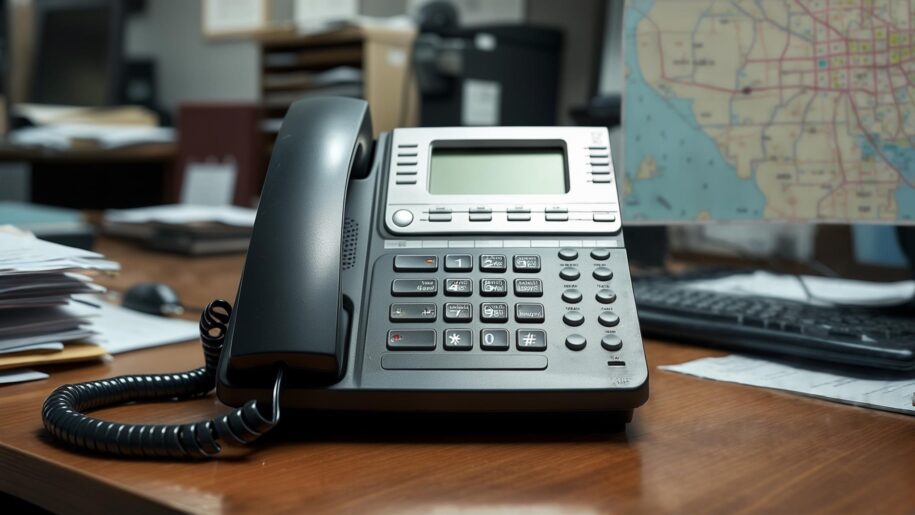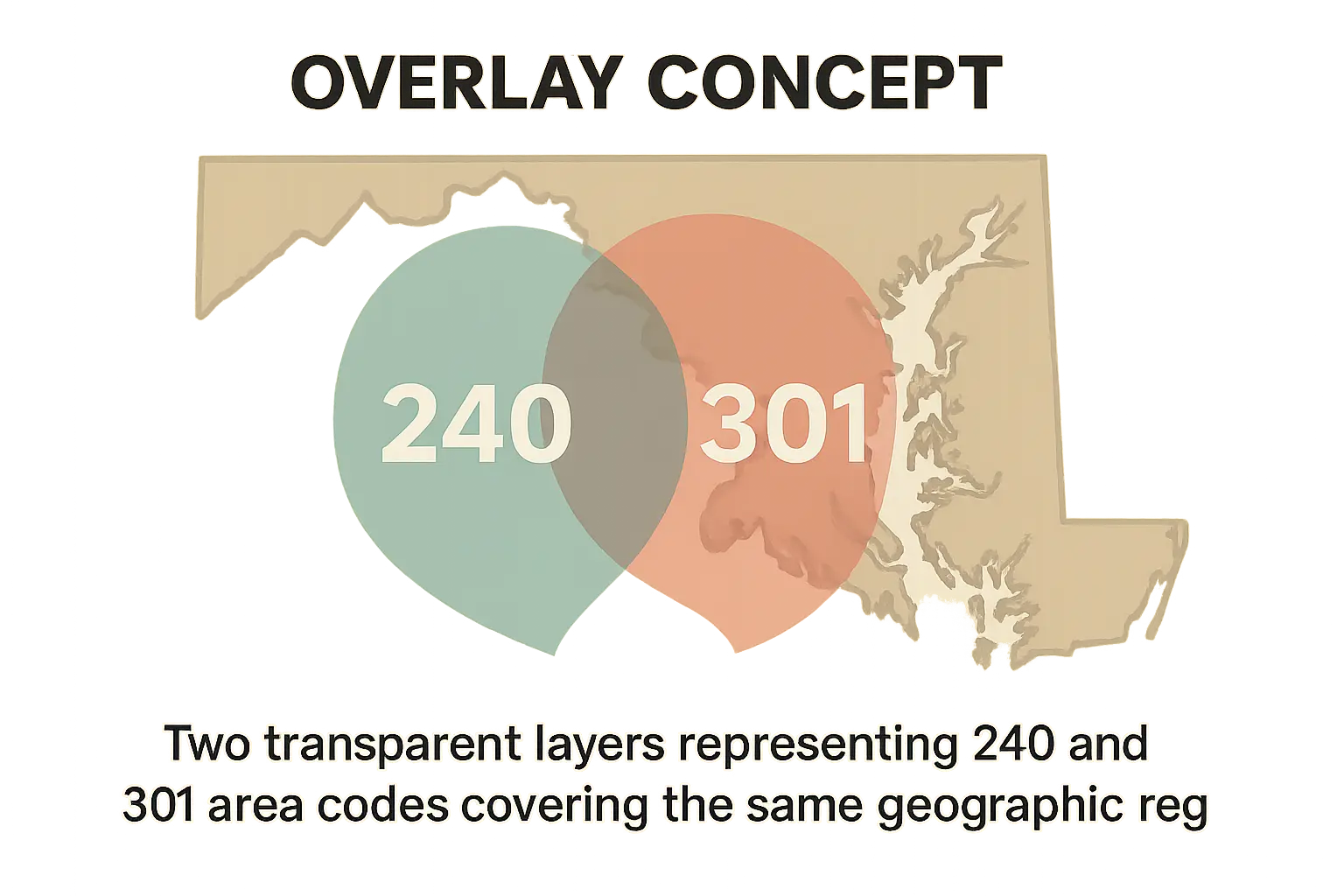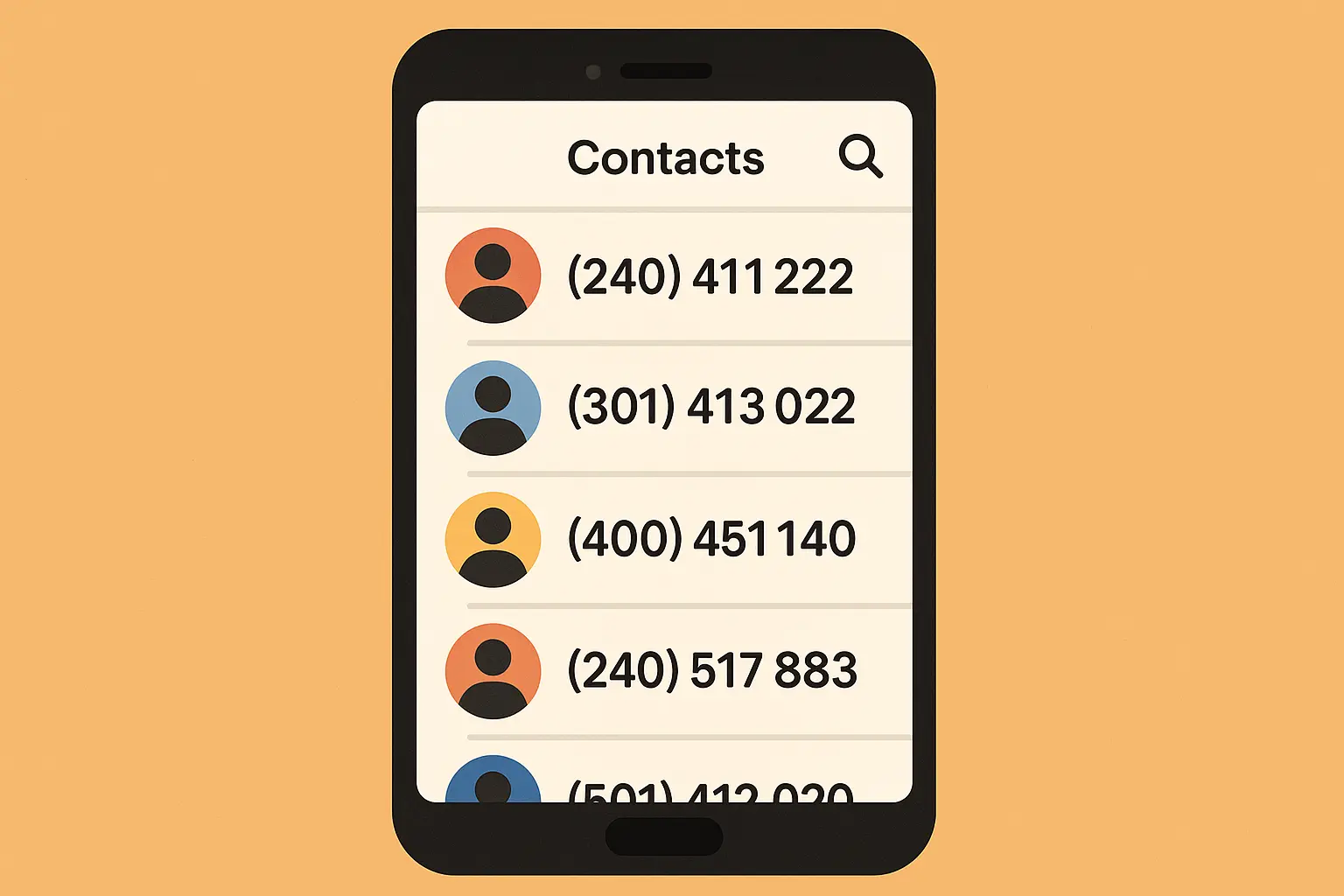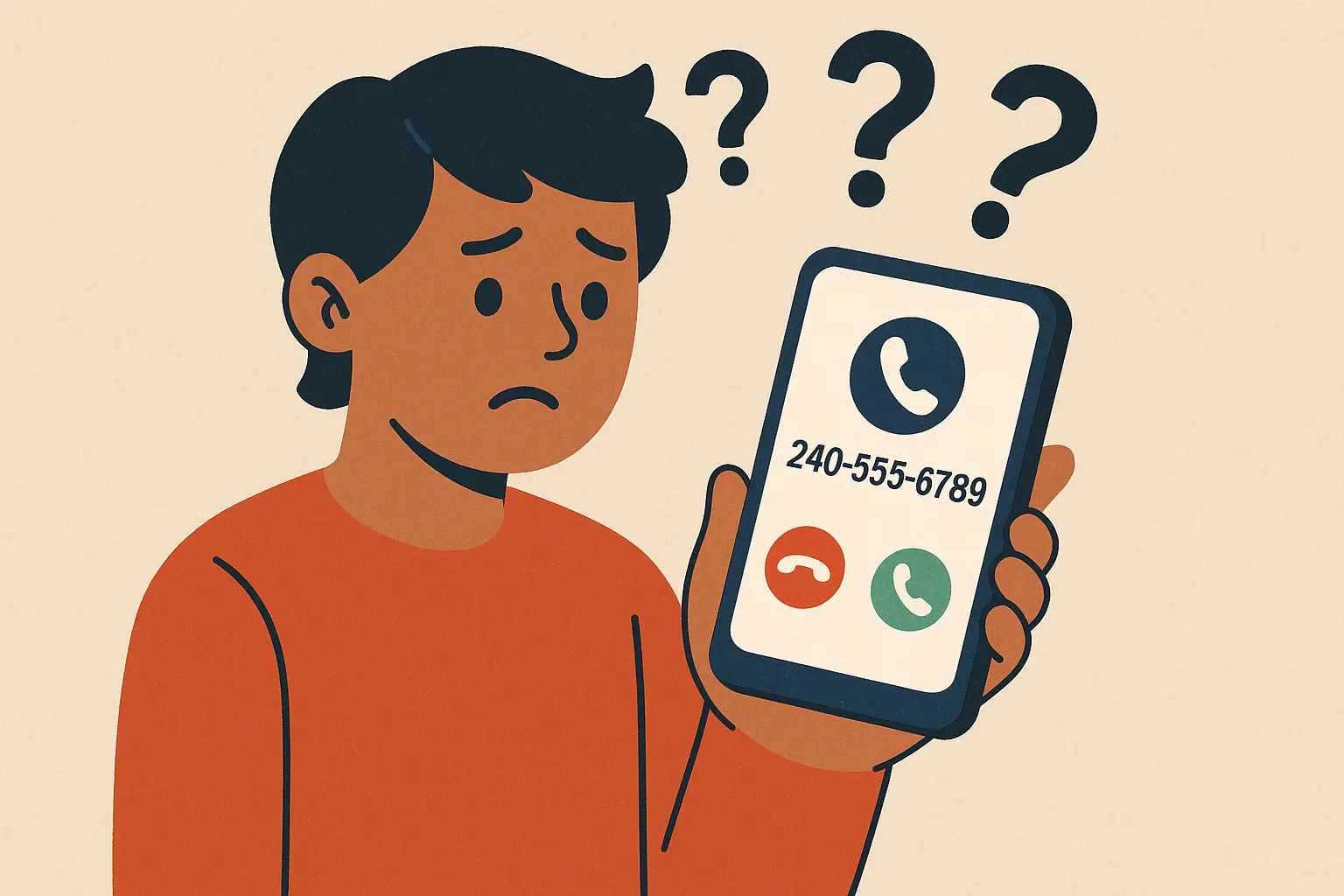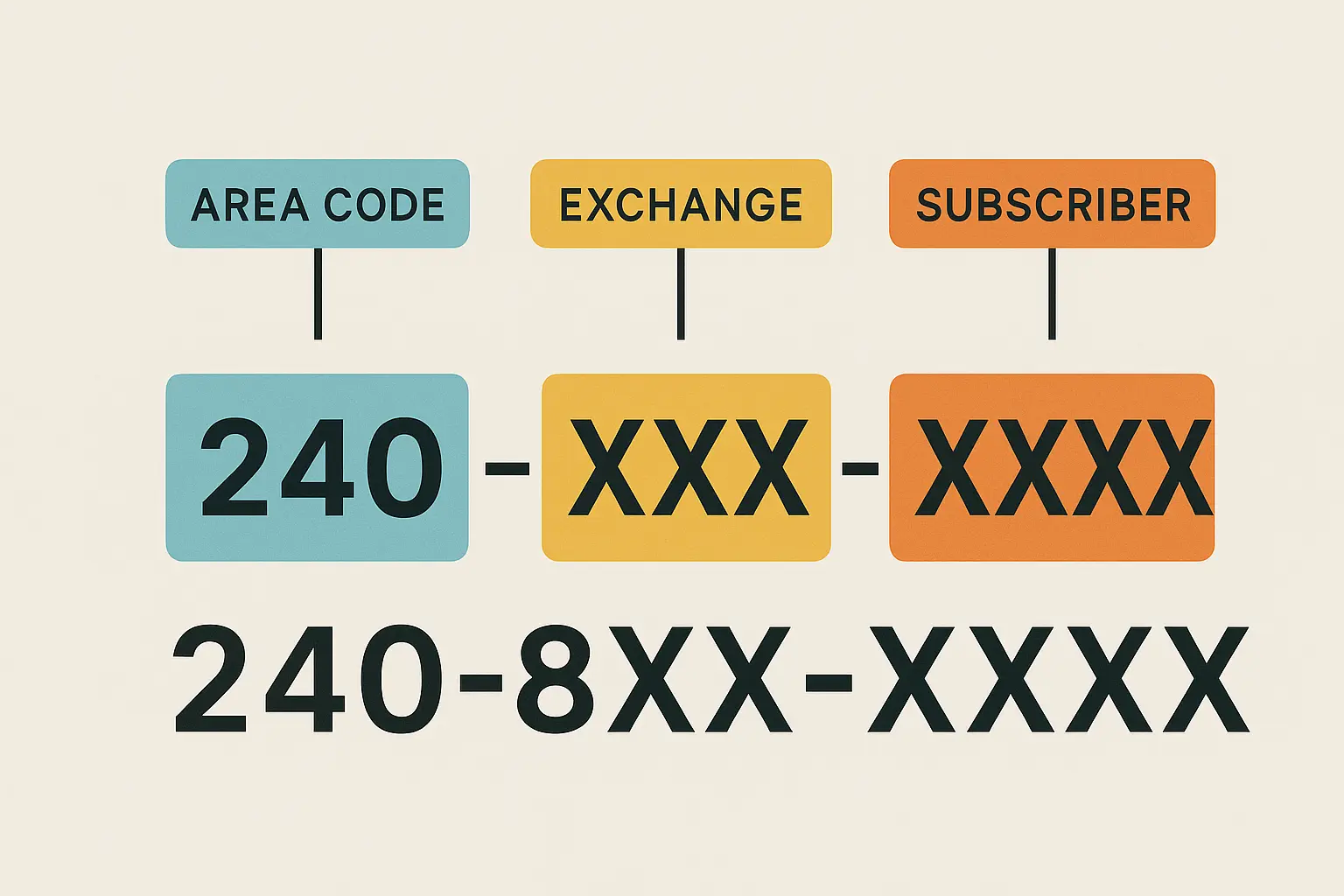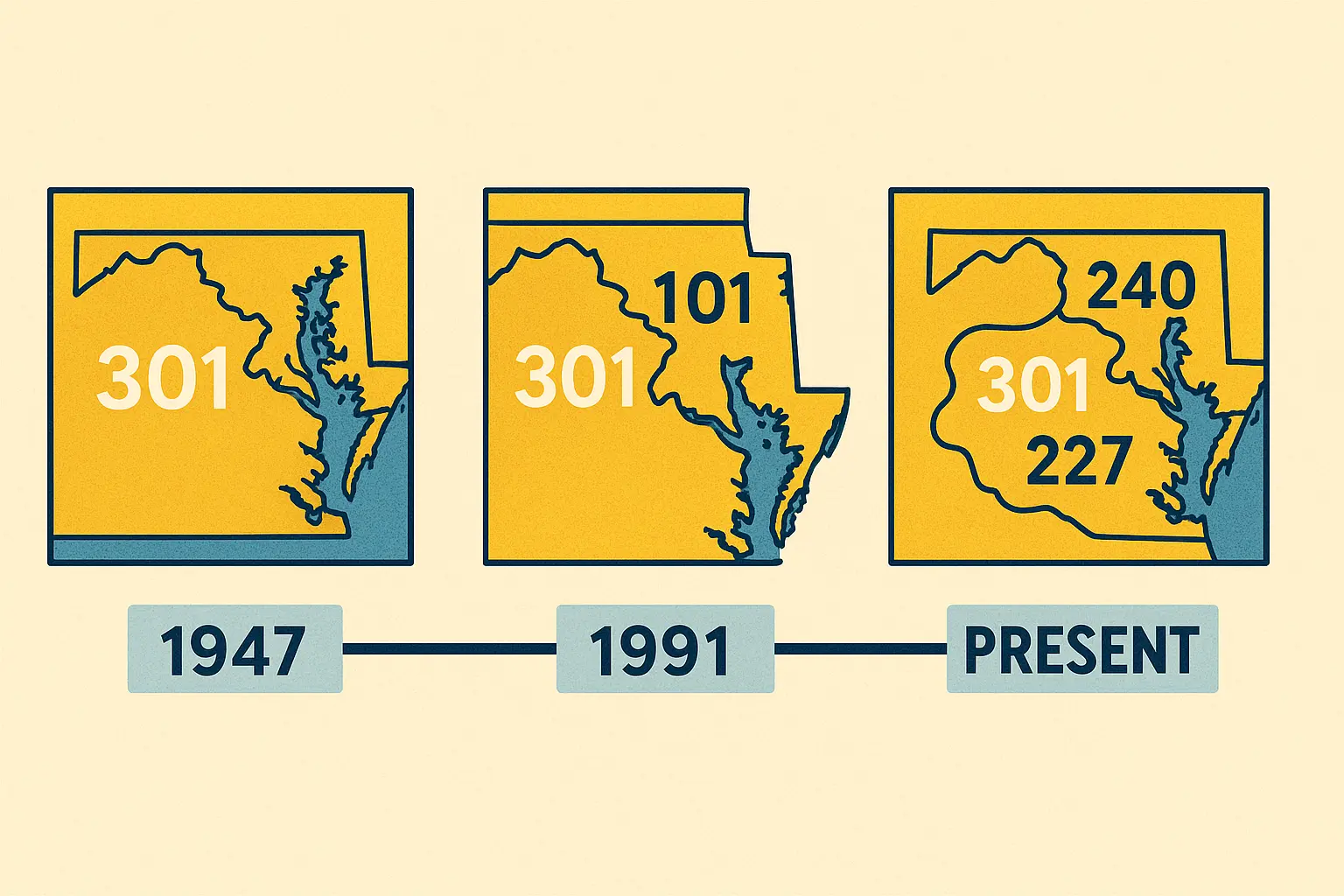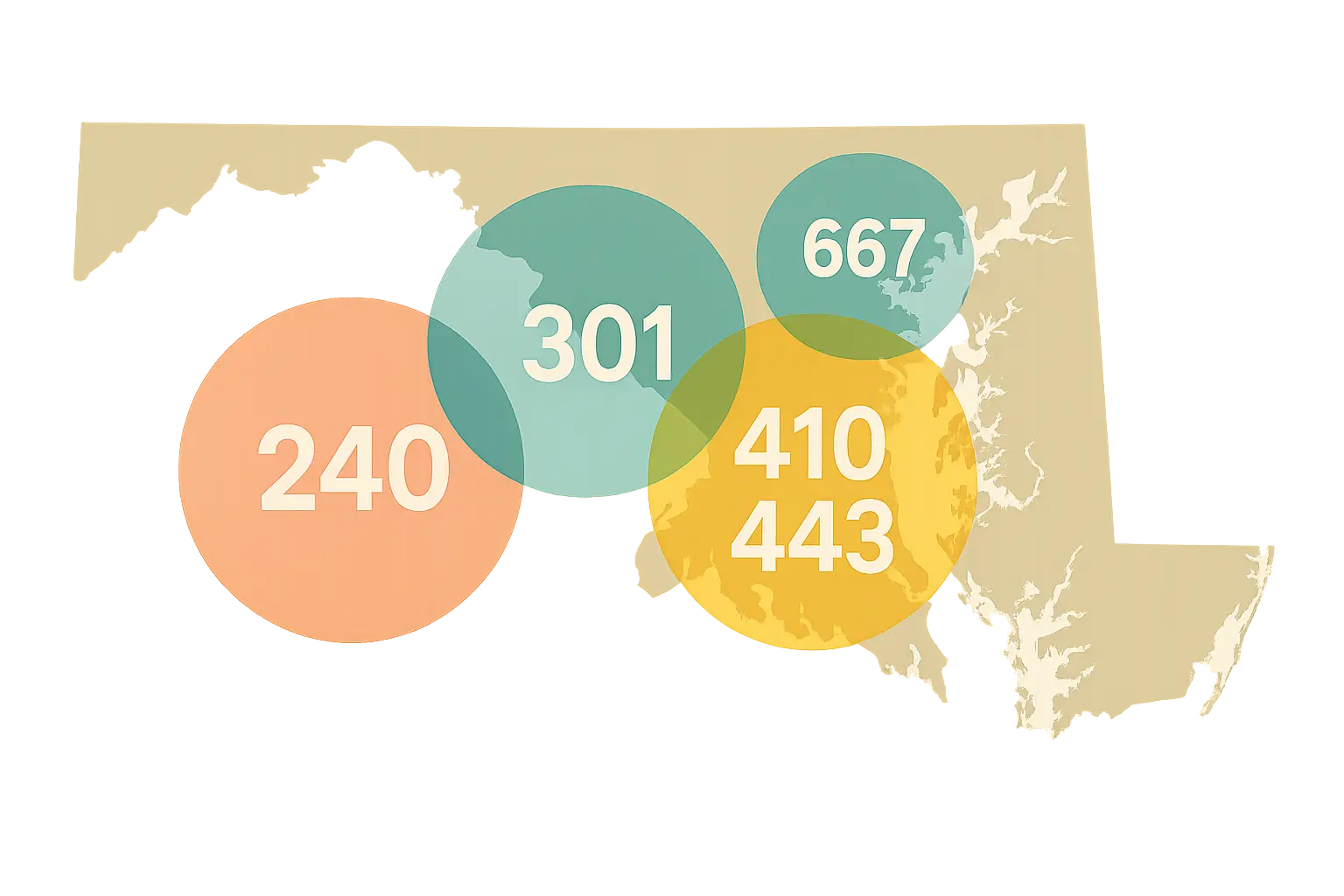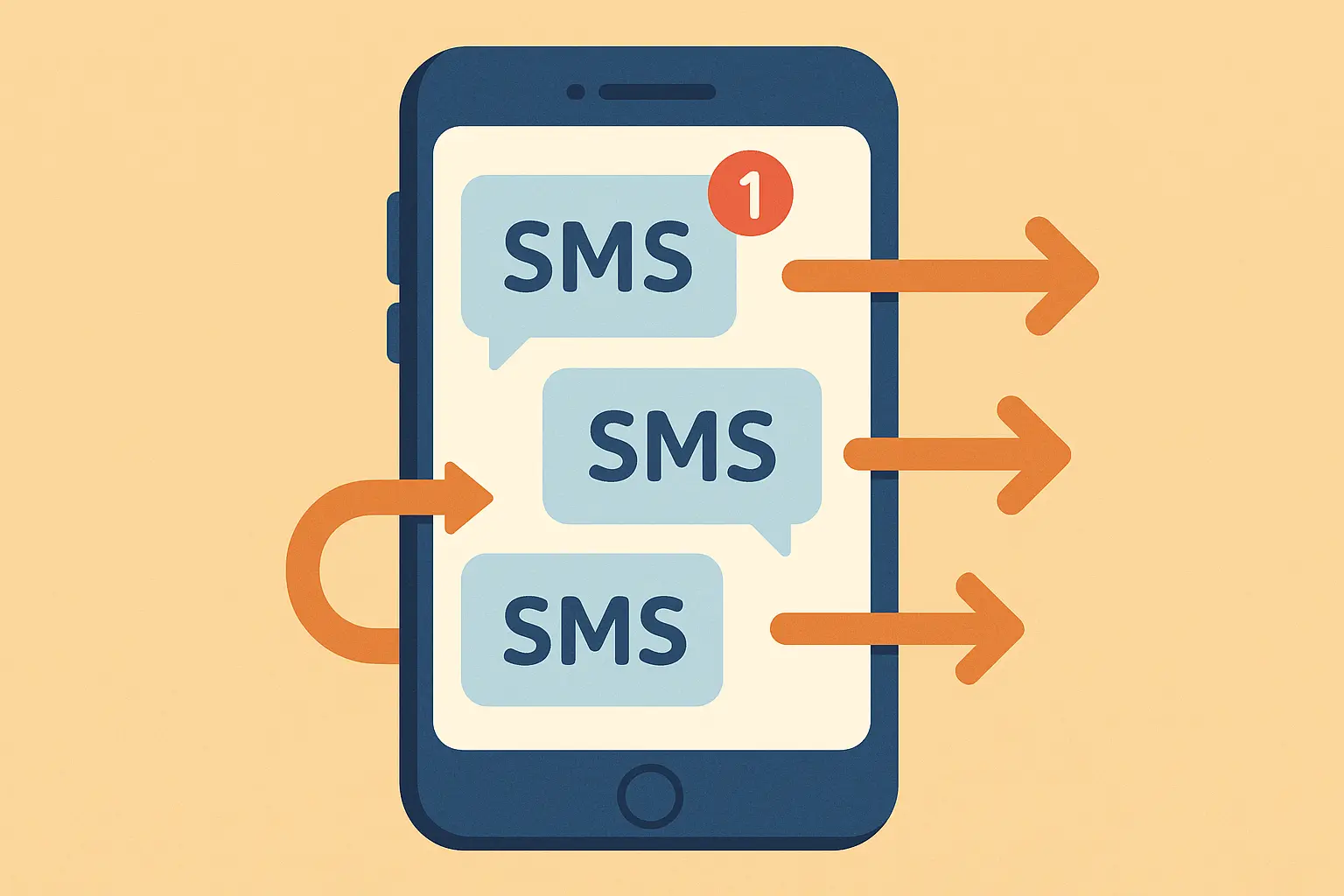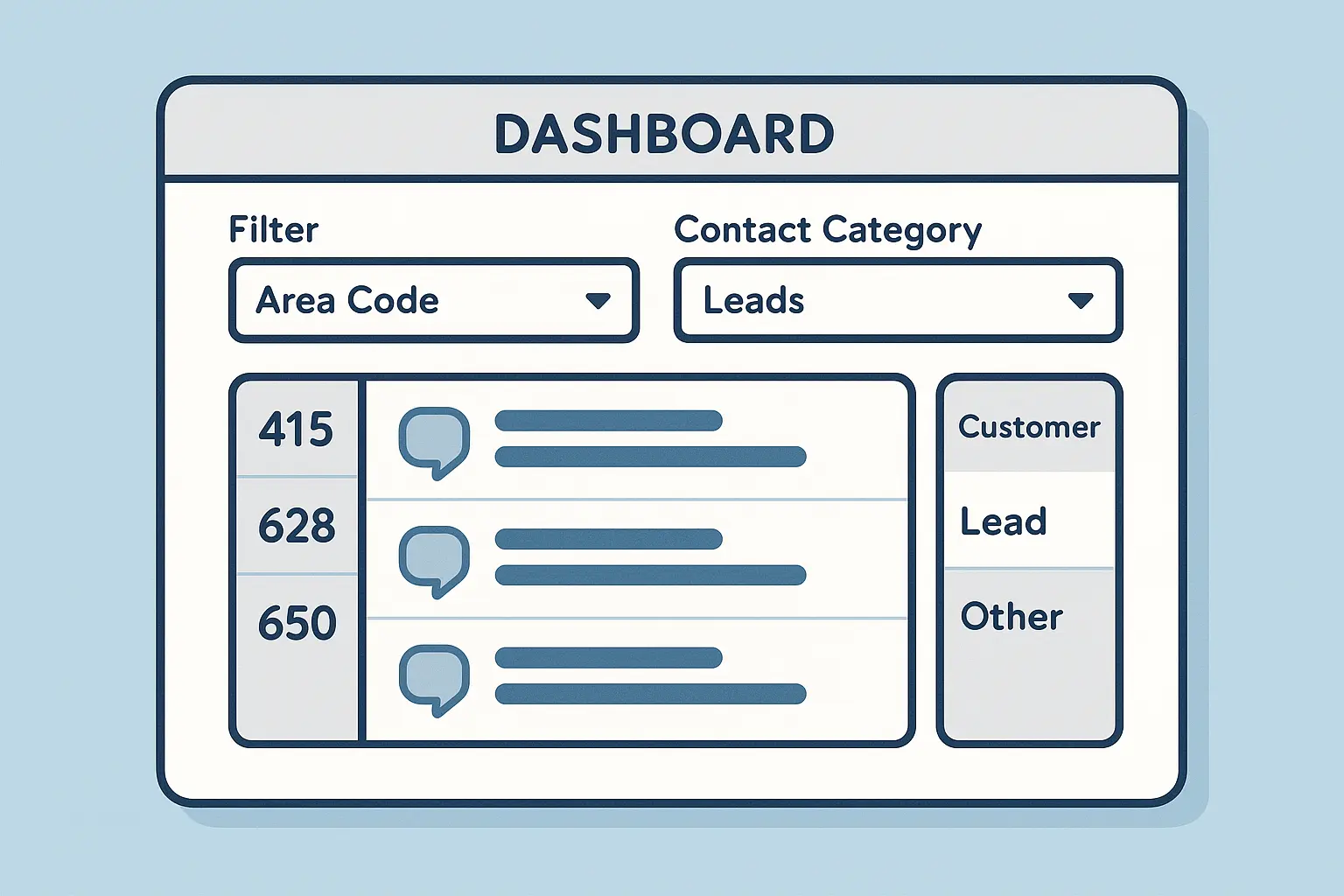If you’ve ever wondered why some Maryland calls need 10 digits or gotten confused by 240 vs 301 numbers, you’re not alone. Here’s what I wish someone had told me when I first moved here.
With Maryland’s population experiencing a significant 4.7% surge since 2020 according to Goodcall’s area code analysis, the demand for phone numbers in our region has never been higher. From geographic coverage to spam prevention, these insights would’ve saved me countless headaches.
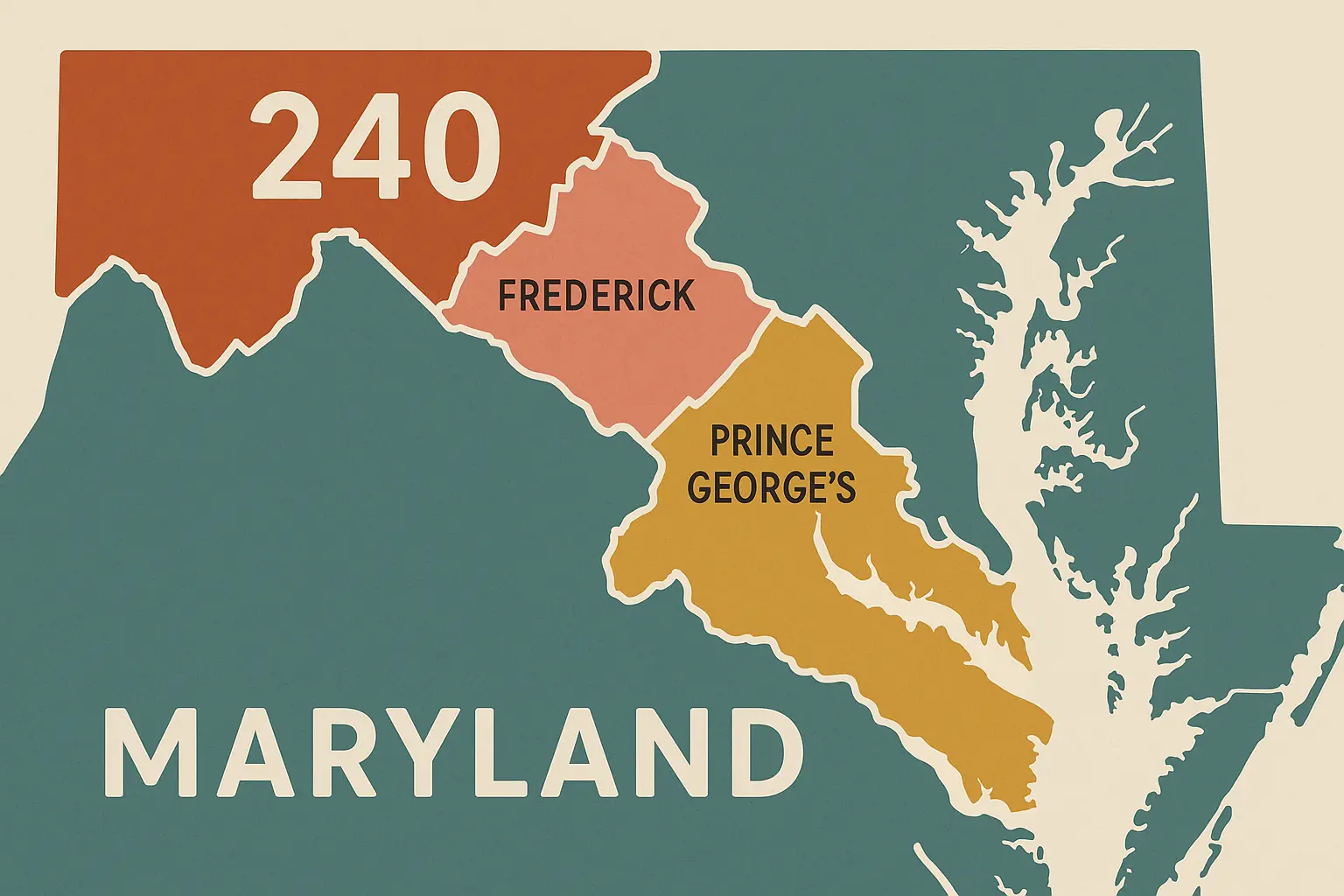
Table of Contents
Table of Contents
-
240 and 301 Cover the Same Places (Seriously)
-
Why Maryland Chose the Overlay System
-
Spotting Legitimate vs. Suspicious 240 Calls
-
How Phone Numbers Actually Get Assigned
-
The Story Behind Maryland’s Number Shortage
-
Managing Your 240 Communications
TL;DR
-
240 area code covers the exact same area as 301 – they’re layered on top of each other
-
All local calls require ten-digit dialing because both area codes serve identical locations
-
Montgomery County, parts of Prince George’s County, and Frederick County all use both codes
-
New phone numbers get assigned either 240 or 301 based on availability, not where you live
-
Scammers can fake 240 numbers just like any area code – always verify suspicious calls
-
The overlay system keeps communities together while providing more phone numbers
240 and 301 Cover the Same Places (Seriously)
Here’s the biggest misconception: 240 isn’t a separate region from 301. They cover exactly the same geographic area in what’s called an overlay system. Both area codes serve identical communities throughout western and central Maryland.
I learned this the hard way when I moved to Rockville. My neighbor had a 301 number, the business across the street had 240, but both were local calls requiring ten digits. That’s the overlay system in action – both codes work in the same places.
The coverage stretches across multiple counties, each with different characteristics:
|
County |
Major Cities |
What You’ll Find |
|---|---|---|
|
Montgomery |
Rockville, Bethesda, Silver Spring, Gaithersburg |
Government offices, tech companies, healthcare |
|
Prince George’s |
Bowie, College Park (partial coverage) |
Universities, government contractors |
|
Frederick |
Frederick, Urbana |
Mix of suburban and rural communities |
|
Washington |
Hagerstown |
Healthcare, retail, manufacturing |
|
Charles |
Waldorf, La Plata |
Military families, government workers |
Montgomery County: The Communication Hub
Montgomery County has the highest concentration of 240 numbers. You’ll encounter them constantly – doctor’s offices, schools, local businesses. The density here means understanding the US phone number format with country code becomes essential for international business communications.
Prince George’s County: Partial Coverage Creates Confusion
Only parts of Prince George’s County use 240/301, specifically areas closer to Washington D.C. This means some residents have 240 numbers while neighbors might have completely different area codes. It’s confusing until you understand the geographic boundaries.
Frederick County: Where City Meets Country
The 240 area code reaches into Frederick County, serving both urban centers and rural communities. Rural businesses often prefer 240 numbers because they sound established to customers, while urban areas see them as just another local option.
Every 240 number operates in Eastern Time, which helps with scheduling but requires attention when coordinating with contacts outside Maryland.
Why Maryland Chose the Overlay System
Back in the ’90s, 301 was all we needed. Then everyone got cell phones, fax machines, and modems. Suddenly, one area code couldn’t keep up with demand.
Maryland faced a choice: split the region geographically (creating different area codes for different neighborhoods) or layer a new code on top of the existing one. They chose the overlay approach, and honestly, it was the right call.
Geographic splits create artificial boundaries that can separate neighborhoods and business districts. I’ve seen other regions where families ended up with different area codes based on which side of the street they lived on. The overlay keeps communities together.
The system continues evolving. According to “Maryland’s new area code and what that means for Washington County” from Herald-Mail Media, Maryland added the 227 area code in June 2023 to address continuing demand.
Ten-Digit Dialing: The New Reality
This was the biggest adjustment – every local call needs the full area code. Even calling your neighbor requires dialing all ten digits. The phone system can’t distinguish between 240 and 301 without the area code.
Quick Setup Checklist:
-
Update stored contacts to include area codes
-
Program speed dial with full ten digits
-
Configure business phone systems for ten-digit local dialing
-
Test medical alert systems with complete numbers
Number Assignment: It’s About Availability, Not Location
New phone numbers can get either 240 or 301, depending on what’s available when you sign up. Your area code doesn’t indicate when you moved here or which carrier you use – just what was available in the number pool.
Last year when I switched from Verizon to T-Mobile, I kept my 240 number without issues. The porting process took about 24 hours, demonstrating how number portability works within the region.
Spotting Legitimate vs. Suspicious 240 Calls
Just because a call comes from 240 doesn’t make it trustworthy or suspicious. Scammers can fake any area code, so evaluate calls based on content, not the number.
Legitimate 240 calls typically happen during business hours and reference specific services or appointments you’ve scheduled. Last month, I got a call from an unknown 240 number. The caller mentioned my upcoming dentist appointment by date and time, then asked to confirm insurance information. I verified by calling the office back using the number on my appointment card – that’s how to handle unknown 240 calls safely.
Red Flags to Watch For
Immediate warning signs:
-
Demands for immediate action or threats
-
Requests for personal information (SSN, banking details)
-
Prizes or offers that seem too good to be true
-
High-pressure tactics or refusal to let you call back
When in doubt, hang up and call back using a number you trust from their website or your bills.
How Phone Numbers Actually Get Assigned
All 240 numbers follow the same format – 240-XXX-XXXX – but those middle three digits tell a story about carriers and service areas. Different carriers get specific blocks of exchange codes, which is why you might notice patterns in numbers from the same provider.
Both wireless and landline services use 240 numbers, and you can’t tell the difference just by looking at the number. This flexibility helps carriers manage their number inventory efficiently.
The FCC manages how number blocks get distributed among carriers based on demand and availability. Your choice of phone company can influence whether you get a 240 or 301 number when signing up for service.
As reported by “Marylanders could soon be calling from an unfamiliar area code” from WTOP, customers requesting new phone service may now get assigned the 227 area code once existing 240 and 301 numbers are exhausted.
The Story Behind Maryland’s Number Shortage
The 240 area code wasn’t introduced randomly – it was a direct response to explosive growth in Maryland’s suburbs near Washington D.C. Population booms and business development created a perfect storm of demand that 301 couldn’t handle.
Suburban expansion in Montgomery and Prince George’s counties brought thousands of new residents needing phone service. Each household might need multiple lines, and businesses required even more numbers for different departments.
The growth has been particularly notable in major cities. Germantown now has a population of 90,160 residents according to area code demographic data, representing one of the largest population centers within the region.
Mobile phones, fax machines, and internet-connected devices created unprecedented demand. Suddenly, every device needed its own number, not just traditional voice lines.
Looking Ahead
Current projections suggest the 240/301 overlay should meet our region’s needs for years to come. If we eventually exhaust both area codes, regulators would likely add another overlay rather than split the region, preserving community boundaries while providing additional numbers.
Managing Your 240 Communications
Whether dealing with business or personal calls, managing messages from various 240 numbers can get complicated. Having the right strategies makes a huge difference in staying organized.
For businesses operating in the 240 area, automated message management can transform how you handle incoming communications. Understanding how to forward text messages to an email address helps streamline communications from different Maryland numbers.
This organizational approach is particularly valuable given Maryland’s impressive 76.70% startup survival rate according to business climate data, meaning many 240 numbers represent growing local businesses requiring consistent communication management.
Practical Organization Tips
For Business Communications:
-
Set up customized forwarding rules for important 240 contacts
-
Use keyword filters for high-priority business messages
-
Enable email notifications for specific senders
-
Create backup systems for redundancy
For Personal Use:
-
Update all contacts with full ten-digit numbers
-
Configure voicemail systems properly
-
Test call forwarding with complete numbers
-
Keep important business numbers easily accessible
Studies show that 68% of Maryland consumers prefer contacting businesses with 240 numbers, associating them with community presence, according to data from Goodcall’s business phone analysis.
What You Need to Remember
Living with Maryland’s phone system has taught me that these overlay systems affect daily life in ways we rarely consider. From dialing ten digits for local calls to recognizing legitimate business communications, understanding how it works makes everything easier.
The key takeaway: 240 numbers are just as local as 301 numbers. Don’t let the different area code fool you into thinking they’re from somewhere else. Whether you’re new to the area or just trying to better understand the calls you’re receiving, remember that it’s all about the overlay system keeping our communities connected.
The adjustment period is real, but once you understand that both area codes serve the same places, everything clicks into place. Keep your contacts updated, stay alert for scams regardless of area code, and embrace the ten-digit dialing reality. It’s a small price to pay for keeping Maryland’s communities intact while meeting our growing communication needs.
